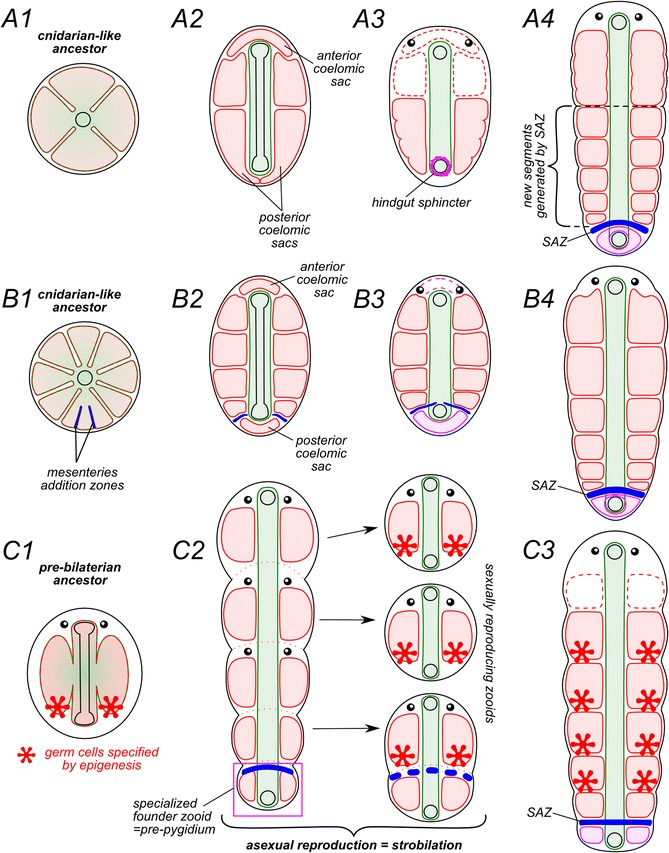Figure 8.

Schematic diagrams describing three hypothetical evolutionary scenarios for the origin of the metamery and the pygidium. The classic cyclomeric theory (A1-4) postulates that the hypothetical cnidarian-like ancestor came to creeping on its oral side. It primary mouth elongated along the newly formed antero-posterior axis. The gastric pouches were separated from the main digestive cavity, giving rise to coeloms. Then anterior coelomic sacs were reduced. The posterior coelom subdivided into two lateral sacs and the SAZ formed posterior to them. The pygidial coelom was formed from the hindgut sphincter by schizocoely and is not homologous to the segmental coeloms. We propose a variant of this cyclomeric hypothesis, more in accordance with the discovery of a true coelomic cavity in the pygidium (B1-4). It suggests that the SAZ has evolved from a mesentery addition zone, located at the “posterior” part of the radial ancestor (as described in contemporary Ceriantharia [68]). The pygidial cavity was formed from unpaired gastric pocket located between two regions of mesentery addition. In the very different colonial theory (C1-3), the pre-bilaterian metameric ancestor derives from a linear colony of sexually reproducing individuals or zooids, that is itself initially produced by asexual budding from a “founder” zooid. In this scenario, the pygidium is homologous to the body segments and represents the founder zooid remnant.
